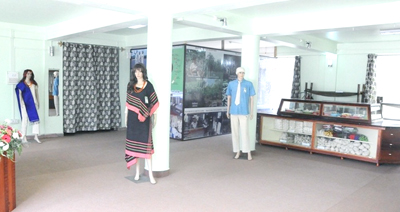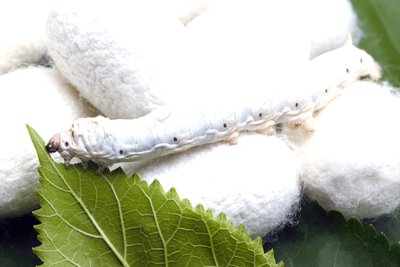
Apparently silk from Nagaland is in ‘high demand all over the country’ and to harness that economic boon, the department of Sericulture wishes to show case silk products.
An emporium for silk products and showpieces dubbed “Silkporium” has been inaugurated in capital town, Kohima.
Parliamentary Secretary for Sericulture, Home Guards & Civil Defense EE Pangteang inaugurated the “Silkporium” on October 13. Located at the Directorate of Sericulture of the new Capital Complex, the showcase will be open for the public on all working days during office hours.The director for Sericulture, Chandan Basera, explained during the inauguration that the ‘Silkporium’ would be acting as an ‘inlet’ as well as an ‘outlet’ for silk growers, weavers and consumers together. He said that the silk from Nagaland was in ‘high demand all over the country and the department will help in outsourcing the products to help silk farmers and weavers of the state.’
The Silkporium has put on display various silk products manufactured in the State and is also available for sale. Mufflers, pouches, knitted caps, tops, shawls, neck ties etc all made of silk yarns are available at the Silkporium. An improvised rearing stand is also put on display. A flower arrangement made of ‘waste cocoons’ by a staff of the department is also on display. For local delicacy lovers one can also try the Silk Pupae pickle that is available at the Silkporium.
Silk is a natural protein fiber, some forms of which can be woven into textiles. The protein fiber of silk is composed mainly of fibroin and is produced by certain insect larvae to form cocoons. The best-known silk is obtained from the cocoons of the larvae of the mulberry silkworm Bombyx mori reared in captivity (sericulture).
The shimmering appearance of silk is due to the triangular prism-like structure of the silk fiber, which allows silk cloth to refract incoming light at different angles, thus producing different colors.
Silk is produced by several insects, but generally only the silk of moth caterpillars has been used for textile manufacturing. There has been some research into other types of silk, which differ at the molecular level.
Silk is mainly produced by the larvae of insects undergoing complete metamorphosis, but some adult insects such as web-spinners also produce silk, and some insects such as raspy crickets produce silk throughout their lives. Silk production also occurs in Hymenoptera (bees, wasps, and ants), silverfish, mayflies, thrips, leafhoppers, beetles, lacewings, fleas, flies, and midges. Other types of arthropod produce silk, most notably various arachnids such as spiders.


